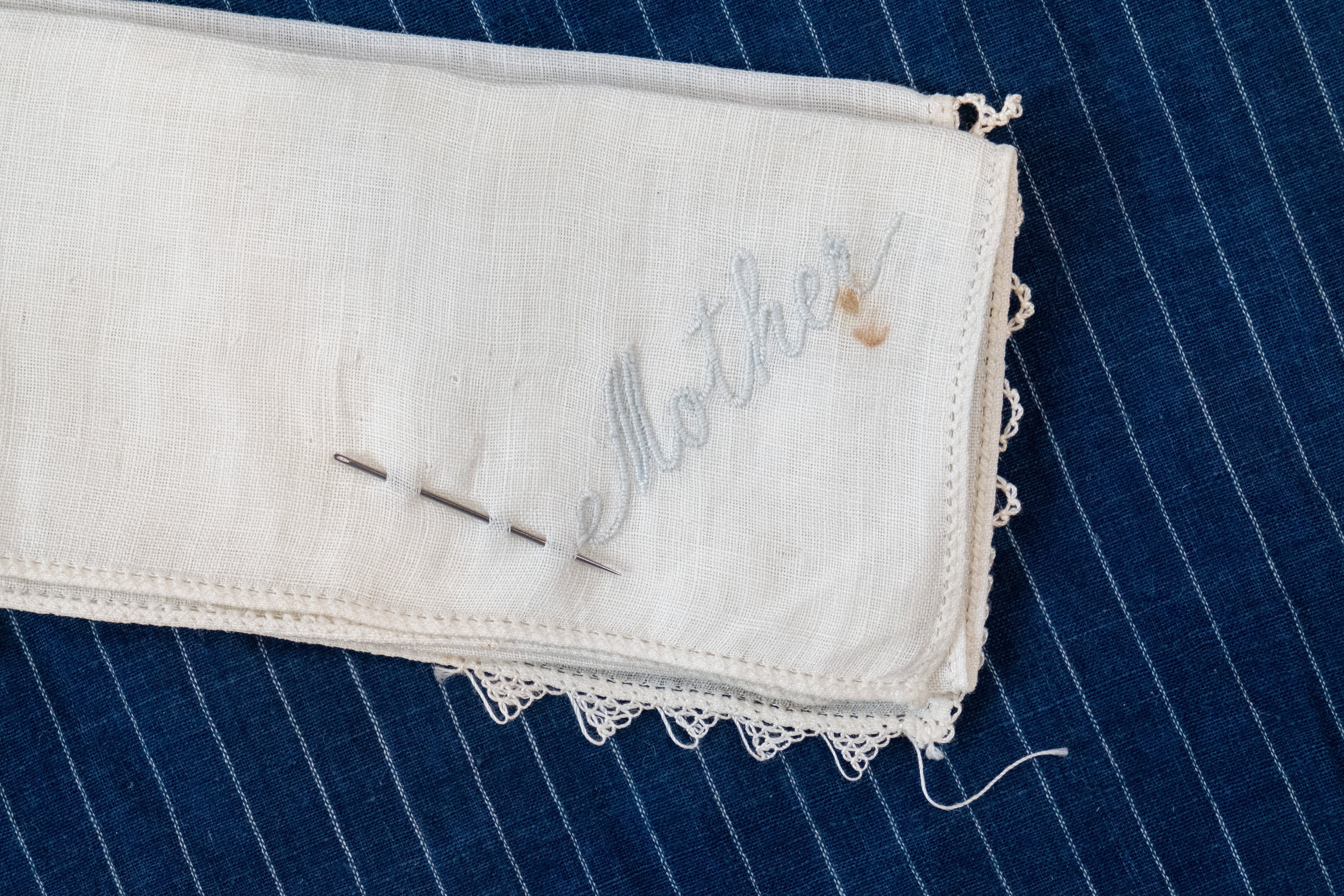
In 1907, Gadar Antoofian carefully stitched samples of handmade lace to the thick card-paper pages of a leather bound book. The intricately tooled cover was stamped with gold lettering which read ‘Scrap Book’. Years later, as a record for her family, in a steady and clear cursive, she dated it with her married, Americanized name: “I made this book 1907, Katherine Amirkarian.”
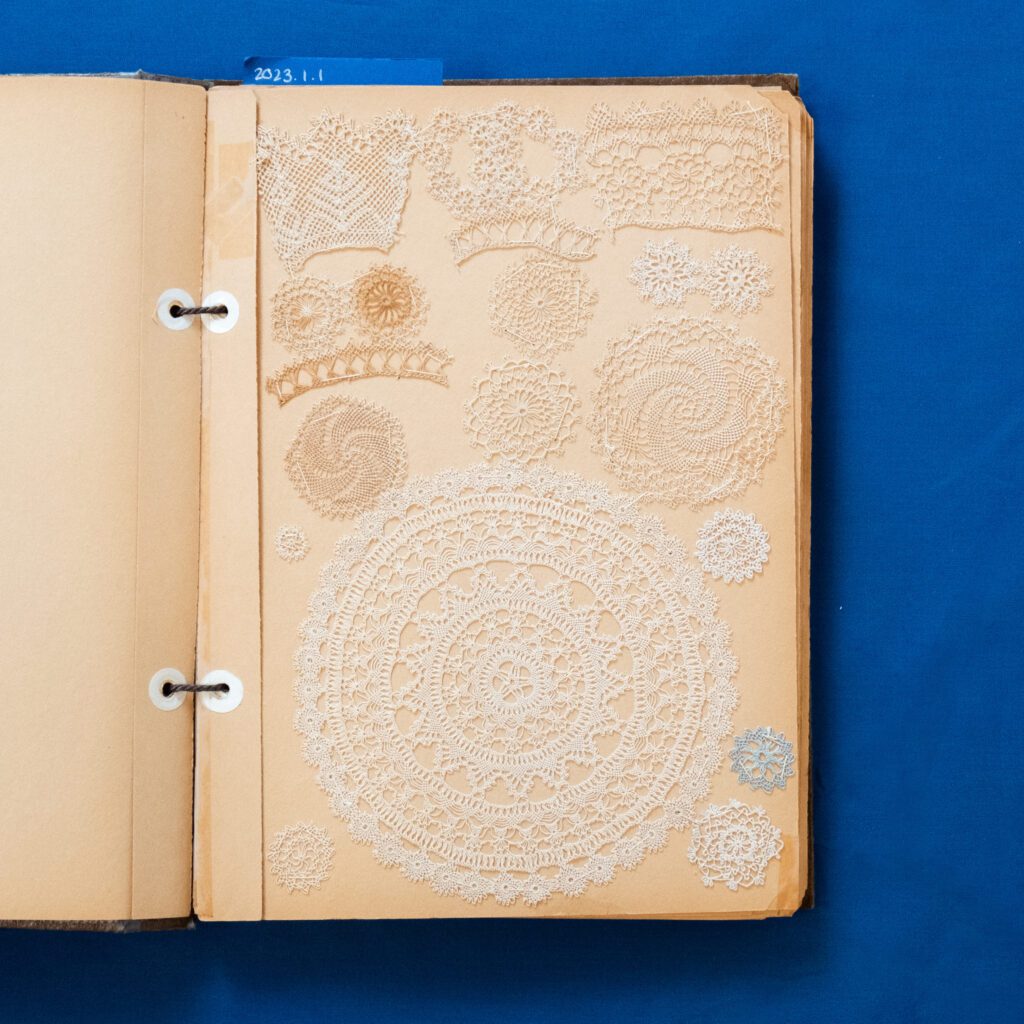
Seventeen pages long, the sampler book contains 155 pieces in a stunning array of techniques. The smallest is a frothy circle of needle lace, barely a centimeter in diameter, and the largest is a block of filet crochet nineteen centimeters long and fourteen centimeters wide. The exquisite, superfine pieces are a testament to the nimbleness of the fingers and mind which created them: tatting, needle, crochet, and bobbin lace.
After the death of her mother in the early 1900s, Gadar fled the approaching Armenian genocide with her three young siblings. They settled in Alexandria, Egypt, where Gadar made a living in lace. Her clientele included nuns who would commission needlework to adorn altars and vestments, and wealthy travelers looking to replicate Parisian couture. She was entirely self-taught.
“If she examined it for 5 minutes or so, she could duplicate anything,” her granddaughter Jeanette Koumjian remembered, “she would work up on their apartment building roof where bright, even light was maximized over the course of a day.”
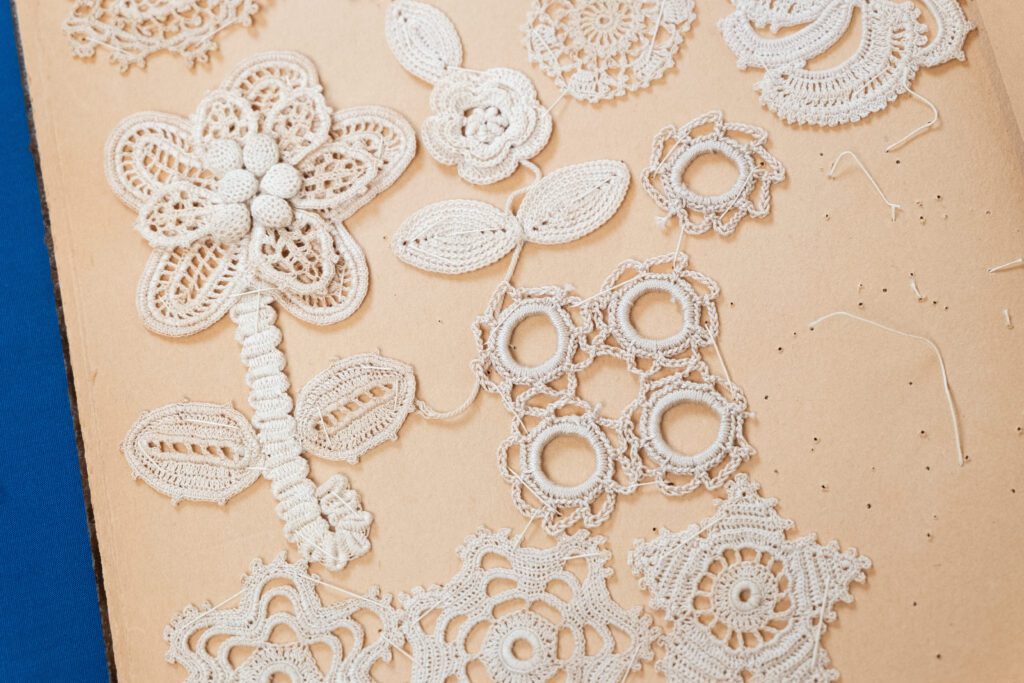
Her wealthy clients, and the well-connected nuns helped Gadar to immigrate to the United States in 1910. She changed her name to Katherine, and on July 7, 1911 she married Arakel Amirkanian in Norwich, Connecticut. There she lived well into her nineties, remembered by her children, grandchildren, and great-grandchildren as a loving and powerful presence as well as a skilled and brilliant needlewoman.
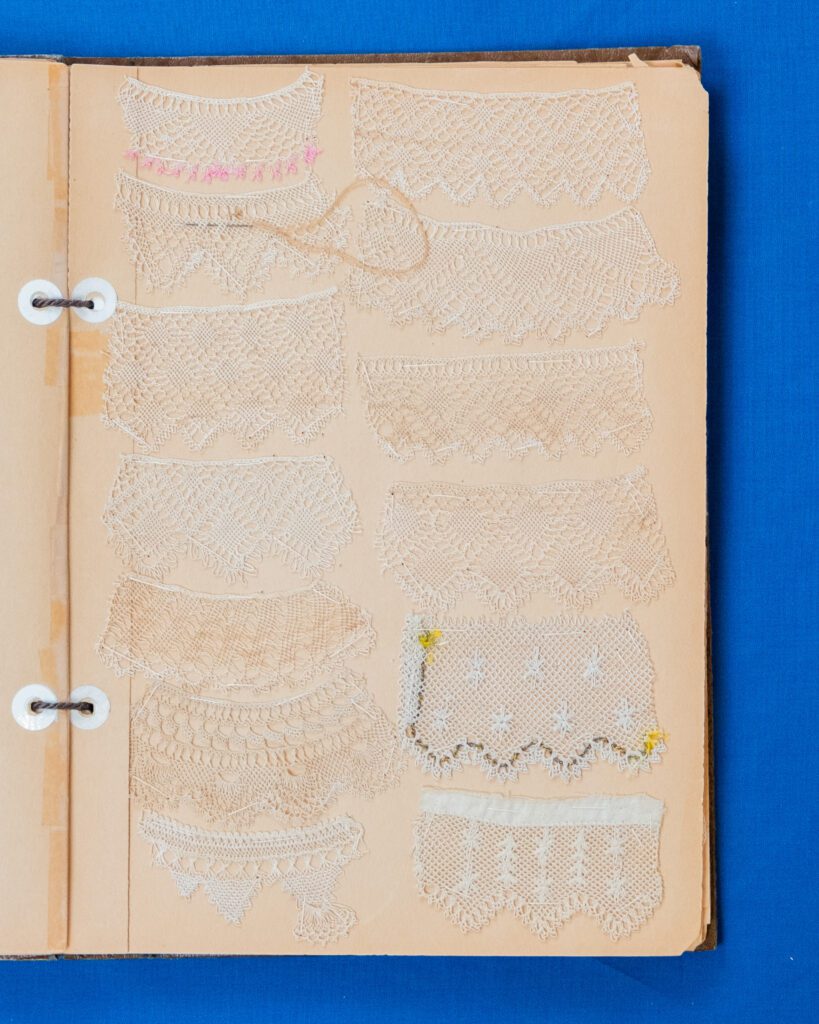
In 2023, Jeanette Koumjian donated her grandmother’s sampler book along with several of her finished pieces and bolts of lace to Tatter. The delicate spirals, many of which were of Katherine’s own design, have been carefully archived alongside her family’s account of her resilience, piety, and love. Jeanette, a fine artist in her own right, and an Instructor at Pratt Institute where she earned her Bachelor of Fine Arts degree, wrote in her correspondence to Tatter: “to us she was Grandma, Mama, a pure-white-haired woman who was mostly quiet and reserved. By contrast, after one of her perfect dinners, she might expertly play her beloved tambourine with aged arthritic hands. She loved books, reading, and took pride in going to night school at the age of 60 in order to become an American citizen. Her person was like her creativity: meticulous, unhurried, complex, elegant. Never once did she leave home without her gloves and hat and, in all likelihood, a modest dress in the color blue. She was petite, in her tiny Coward Oxfords, but commanded outsized respect.”
To preserve the work of our mothers and grandmothers in a world that rarely values their labor and their art is a radical act of love and solidarity. It is a mission which is central to our work at the Tatter Textile Library, where artists and scholars come to study and celebrate the skill and resilience of women like Gadar Antoofian. On Mother’s Day, as on every day, we celebrate their contributions to the material history of our world.

SCHEDULE YOUR LIBRARY VISIT TODAY
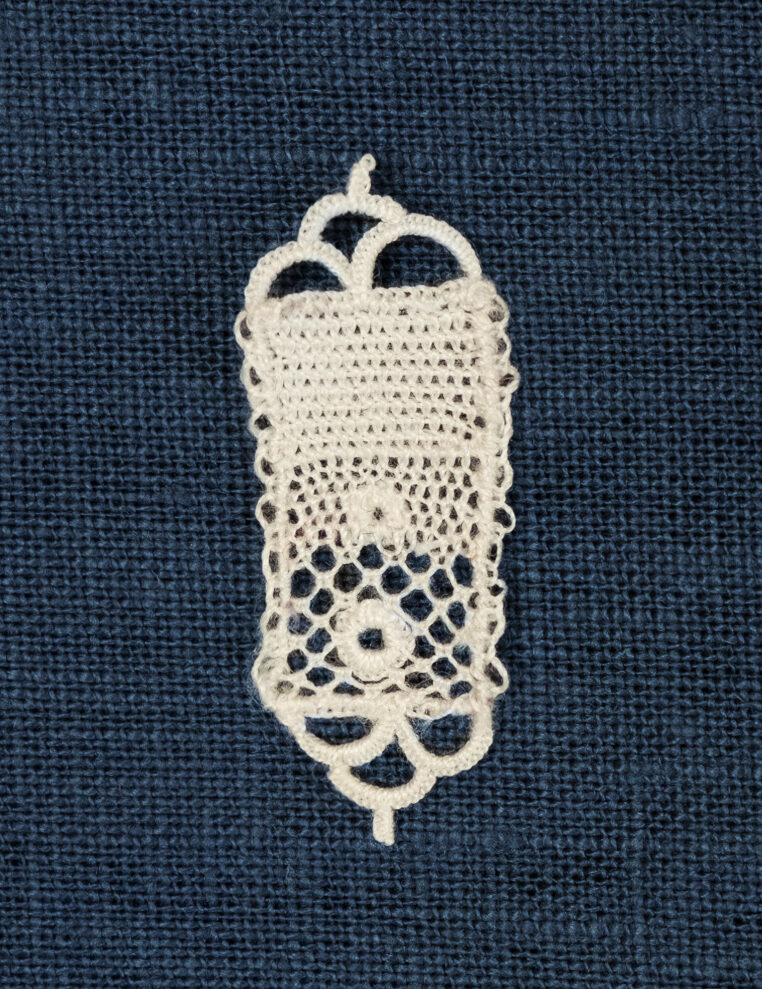
Take a trip to Ireland this summer from the comfort of the Tatter studio. Learn about the historical significance and importance of the Irish lace industry from an economic, social and political perspective.
Explore antique lace samples from the personal collection of Fiona Harrington and the Tatter collection, as you discover the 5 styles of lace that are associated with Irish lace making.
Create your own needle lace sampler, including 4 Kenmare needle lace stitches and decorative border options. This sampler will measure approximately 1.5 x 4 cm.
You will leave with an understanding of how to prepare a pattern, create a needlepoint lace sampler, remove your piece from the backing and ‘clean’ the lace.
Date + Time
Friday, July 12th & Saturday, July 13th, 2024
10 – 2 pm ET
Location
Tatter Textile Library: 505 Carroll Street, #2B, Brooklyn, NY 11215
